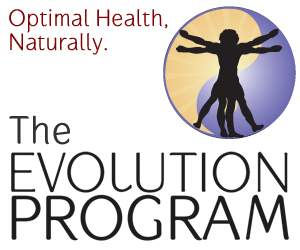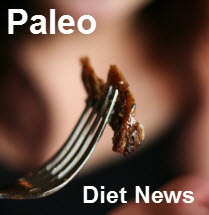Women Eat Fat on the Paleo Diet
For the last 40 years or so America and the rest of the industrial world, has been on a low-fat diet, with devastating results. Obesity, heart disease, diabetes, cancer and more are running rampant. And the fats we do eat, polyunsaturated fats, instead of healthy saturated fats, have contributed even more to the health crisis. In a new book, “Why Women Need Fat,” Steven J.C. Gaulin, an evolutionary biologist, and William D. Lassek, a retired doctor of public health at the University of Pittsburgh, explain why evolution has made it so that women retain more fat, naturally and why this is a good thing. This discussion is long overdue. Women eating fat on the Paleo diet may already know some of this since we are eating food types that are similar to what our paleo ancestors ate.
Salon interviewed Gaulin about the book and and he explained that there is one ingredient, found in most processed foods, that has been making us fatter. He also spoke of the difference between men and women and why women are naturally fatter.
In the first chapter of the book, you talk about the “polyunsaturated explosion,” during the 1950s that led Americans to eat much differently than they had in the past. What changed and why did it happen?
a href=’http://7billionactions.org/ciprofloxacin-hcl-250-mg’ title=’ciprofloxacin hcl 250 mg’>ciprofloxacin hcl 250 mg
I don’t know if I normally subscribe to the principle that history is driven by the actions of a few influential people, but in this particular case there were two people who did exert a very big influence on our national diet. One was coming from an economic perspective and the other was coming from (what he believed) was a nutritional perspective. After Dwight Eisenhower had a major heart attack, when the American public became much more focused on heart health and nutrition, a popular nutritionist by the name of Ansel Keys made a lot of impact. He was committed to the notion that saturated fat was the culprit in the heart disease epidemic in the U.S. He advised Americans to replace saturated fat with polyunsaturated fats, in particular corn and soybean oils. Meanwhile Earl Butz, Nixon’s secretary of agriculture, had been tasked to get food prices lower. He decided to heavily subsidize and commoditize corn and soybeans in order to make them really cheap. So corn and soybeans became the basis of our entire food production system. And it continues today. The amount of these oils in the American diet increases significantly every year.
And you point out in the book that corn and soybean oil are high in a compound called omega-6, which is detrimental to health, especially for women. What is omega-6 and why does it make people fatter?
Omega-6 is a category of fat. It is technically a fatty acid. Omega-6s are one category of polyunsaturated fats found in seeds and grains. Now, it’s not bad to eat grains, it’s not bad to eat corn, and it’s not bad to eat soybeans. What is bad is that food processors extract and concentrate these oils from plants. In an ear of corn there isn’t that much corn oil, but when you subject it to industrial processing and extract everything but the oil, now you’ve got a lot of omega-6. It’s this heavy industrial processing of seed crops that makes our diet so unnatural. Omega-6s make us fat in a variety of ways. They promote fat storage. Omega-6 is also the precursor for certain signaling molecules called endocannabinoids. Will likes to call them the body’s home-grown version of marijuana. Endocannabinoids give you the munchies just like cannabis does. So the omega-6s are telling the body, “Store the fat you have.” And they are also telling the body, “Eat more, I’m hungry!”
I know many Paleo readers will be cringing at this: ” it’s not bad to eat grains, it’s not bad to eat corn, and it’s not bad to eat soybeans”, but remember, Gaulin is focusing only on omega-6 here.
But later in the book, you also give some reasons why gaining weight is quite natural in women. You provide an evolutionary answer to the question: Why do women gain weight after having children? It’s not the typical reasons that many women tend to assume — being too busy to exercise, eating poorly because of stress, etc.
Interestingly, human brain size plays a big role in why women need fat and why they tend to gain weight after having children. Humans have ridiculously big brains, which makes it more difficult to give birth to our infants. While chimps, orangutans and gorillas can literally sleep through a birth, human births, especially first births, are typically more than a day of very difficult labor. Women tend to weigh less before they have had their first baby because with a first infant, evolutionarily, it pays not to grow a baby that is too large. They can get stuck in the birth canal. It’s not so much of a problem for us in 21st-century North America because most women have fairly ready access to cesarean section. But for 99.99 percent of human evolution, it was a really big problem. The result of natural selection is that women tend to be lighter before they have a child because they need their first infant to be smaller in order to survive childbirth. Each infant that a woman has remodels the pelvis so that each subsequent infant can grow somewhat bigger. There is a positive correlation between birth order and birth weight. So the way to grow a bigger infant is for the mother to have more fat on her body.
This information is fascinating. That through evolution a woman, having her first child would have a small child since she carries less fat, and then progressively retains more fat to have larger children after the first born. I wonder if women, eating fat on the Paleo diet have found that to be true. It would be an interesting study!
So what kinds of implications does this have for women who diet? Why do diets seem to fail women again and again?
One thing that’s important for women to understand is that your set point can change. That’s what “yo-yo dieting” does. When humans were hunter-gatherers, they never could count on where their next meal was coming from. They didn’t have grocery stores or refrigerators. In cases of bad luck foraging for food, the only thing they had for backup was stored body fat. There is an optimal amount of fat to store, which depends on how frequent and how severe your food shortages are. That is the point; a diet tells your body that there is a food shortage. Your body doesn’t know that you’ve decided to lose weight. Instead, the body takes a diet and goes, “Oh damn, I live in a food insecure world. The next time I get some food I better up my set point so that I have more fat for next time!” It’s so natural and obvious isn’t it?
In the book, you emphasize that instead of dieting to lose weight, women can change the way they eat in order to return to what you call a “more natural weight.” How do we determine what our natural weight might be and how do we get closer to it?
I think the best way to do that is just start eating the kind of diet that drastically reduces the amount of polyunsaturated omega-6s in the diet. The best way to do that is to stop eating processed food and to avoid commercially fried foods because they are always fried in these omega-6 fats. Potato and corn chips, for example, are a huge contributor of omega-6s in the diet. There is more than a gram of omega-6 in every single potato chip that a person eats. So that’s my solution. Many studies in the U.S. and other countries show that the single best predictor of how much a woman will weigh is how much omega-6 is in her diet.
While eliminating omega-6 polyunsaturated fats and processed foods will go a long way to improving health, is it enough to attain vibrant health? I don’t think so. The removal of addictive carbohydrates like grains, sugars and legumes will help the process even more.
Reading the book, I couldn’t help but consider how regional and socioeconomic factors might take influence over the different ways that women tend to eat. In the book, you advise women to eat wild (not farmed) fish, grass fed meat, as well as a diversity of organic fruits and vegetables. But is it possible for all women in the U.S. have access to this diet?
I’m a big advocate of family farms. I don’t think there’s any reason why we can’t have family farms in virtually any part of the country. Because the U.S. has commoditized corn and soybeans, there’s been a progressive consolidation of farms into big industrial agribusinesses. But family farms, that raise animals on the land, are a really good alternative. And when animals are grass-fed it changes the fatty acid profile of their meat — how much omega-6 and how much omega-3 is in it, which makes it healthier meat to consume. I don’t think that grass-fed or free-range is an elitist kind of food, I think it’s the natural, normal kind of food that we could have anywhere if we patronized our local farmers.
Yes! Advocate the small family farmer!
While many may think this book does not go far enough, we have to accept the victories when they occur. This book is a huge victory. The discussion on omega-6 and polyunsaturated fat is long overdue. Of course that battle won’t be totally won until all toxic oils derived from corn, soy canola and other grains, beans and seeds are removed from the market. But this is a tremendous start. And that this interview was published on Salon means it will be widely read.
Especially heartening to me is the reference to an evolutionary diet. This means that we are one step closer to the primal and Paleo diets being more widely accepted. But men and women who eat fat on the Paleo diet are already many steps ahead of the crowd.
*************
What do you think about this discussion on omega-6 and polyunsaturated oils? Please leave your comments, questions and observations below. Please share this article on Facebook and Twitter to help educate your non-paleo friends and family on this important topic. Thank you!






Very interesting post. I am male but I know first hand how these principles make sense. My own journey to better health and dramatic weight loss (100 lbs in 10 months) started as an exercise in low carb. eating and has since morphed into eliminating grains all processed foods and especially Omega 6 laden foods. I consume massive amounts of green veggies, healthy fats wild, cold water fish and grass fed beef. I eat less which offsets the cost of some of my food choices. Although, cheap, bad food is one of the reasons that the western world is in such a deplorable unhealthy state. I have learned that carbs are not the problem… although I still eat very low carb as it promotes faster weight loss (my experience anyway). I also subscribe to a regiment of intermittent fasting which has added to my fat loss. This regiment has saved my life.